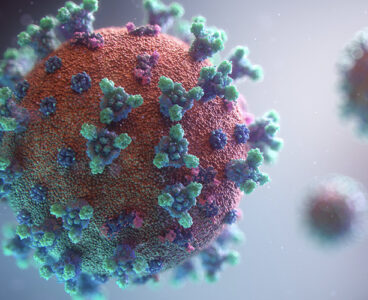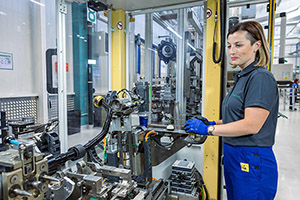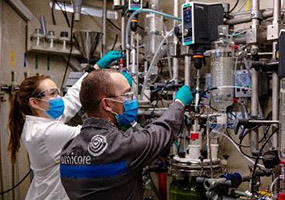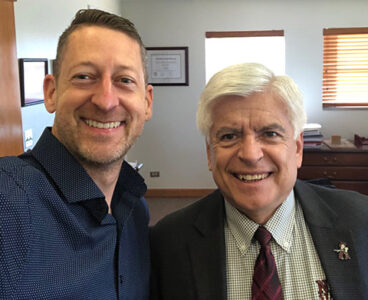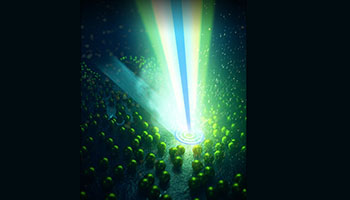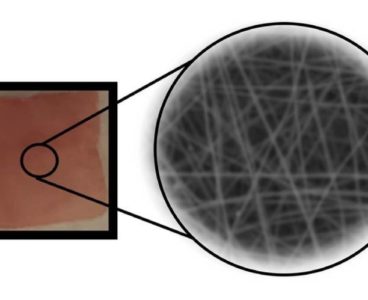By Mark Jones It is different. Still a little scary. I am now in my last day of COVID isolation. Fully vaccinated and boosted, I managed to catch COVID for a second time. Yep, I am a return customer, a double breakthrough case. There are some big differences. In May of 2021, I felt invincible.…
DOE awards $135M for groundbreaking research by 93 early career scientists
From the Department of Energy: The U.S. Department of Energy (DOE) has announced the selection of 93 early career scientists from across the country who will receive a combined $135 million in funding for research covering a wide range of topics, from artificial intelligence to astrophysics to fusion energy. The 2023 Early Career Research Program…
Schaeffler opens development center in Slovakia – a think tank for tomorrow’s mobility
Schaeffler is expanding its global development activities for advanced mobility solutions. As part of this, the company has now opened a new state-of-the-art development center at its location in Kysuce, Slovakia. The center develops products and components for electromobility as well as chassis systems for applications such as automated driving. The global automotive and industrial…
AI expansions draw global regulatory focus, in this week’s R&D Power Index
Future-Proof Your Point of Care Solutions
Point of Care (PoC) solutions can provide a faster time to diagnosis, an earlier start to treatment, and a faster recovery for patients. This webinar overviews new chemistry and biosensing technologies that enable decentralized testing by measuring a variety of biomarkers, proteins, and DNA. The webinar showcases Analog Devices unique portfolio of electrochemical and…
UK company provides insights into delivering sustainable fusion energy
Fusion energy may be our planet’s best long-term solution to the existential threat of global warming. A recent breakthrough in fusion energy is raising renewed hopes that practical fusion power may be on the horizon. Controlled fusion, which produces no greenhouse gases, offers prospects for obviating the production of long-lived actinides and eliminating the threats…
Long range EV and chip plans taking shape, in this week’s R&D Power Index
The R&D World Index (RDWI) for the week ending July 22, 2022, closed at 2,493.56 for the 25 companies in the RDWI. The Index was down -0.54% (or -13.46 basis points) from the week ending July 15, 2022. Thirteen of the 25 RDWI members gained value from 1.42% (Microsoft) to 7.91% (Ford Motor Co.). Thirteen…
Dotmatics supports Umicore Corporate R&D in processing of experimental data
R&D scientific software company Dotmatics announces it has been selected by Umicore Corporate Research and Development, which is part of global materials technology and recycling company Umicore, as informatics partner for its Corporate R&D (CRD) digitalization project. The strategic agreement to implement core elements of Dotmatics’ R&D innovation platform within CRD, including electronic laboratory notebook…
2022 R&D 100 Awards to open March 1st
The 60th R&D 100 Awards program opens for submissions on March 1st, 2022. The program is open to corporate, government, and academic R&D organizations across the globe, and has been called “The Oscars of Innovation.” First established in 1963, the R&D 100 Awards is the only S&T (science and technology) awards competition that recognizes new commercial…
Dan Arvizu on embracing the soft skills as a leader
The first time Dan Arvizu thought about anything related to science or engineering was in the sixth grade. His teacher, John Price planted the seeds about a pathway that Arvizu hadn’t anticipated when he assigned the young student to write a paper on what matter was. Price was “one of the first people who gave…
On being a better leader
Earlier this month, I had the opportunity to sit down with Dr. Dan Arvizu, the Chancellor of New Mexico State University. Arvizu also sits on the President’s Council of Advisors on Science and Technology and was the first Hispanic to lead a DOE National Laboratory. One of the things we touched on what makes engineers…
Cell “Fingerprinting” could yield long-awaited Alzheimer’s disease diagnostic
By Aliyah Kovner, LBNL A technology developed by scientists at Lawrence Berkeley National Laboratory (Berkeley Lab) shows great promise for diagnosing Alzheimer’s disease before symptoms arise, potentially changing the course of research and treatment for this condition, which affects millions of people worldwide and is estimated to be the sixth leading cause of death in…
Merck announces a COVID pill, in this week’s R&D Power Index
The R&D World Index (RDWI) for the week ending October 1, 2021, closed at 5,308.12 for the 25 companies in the R&D World Index. The Index was down -2.47% (or -134.97 basis points) from the week ending September 24, 2021. The stock of seven R&D World Index members gained value from 1.39% (Roche Holdings) to…
Mimicking mother nature: New membrane to make fresh water
From Sandia National Laboratories Scientists at Sandia National Laboratories and their collaborators have developed a new membrane, whose structure was inspired by a protein from algae, for electrodialysis that could be used to provide fresh water for farming and energy production. The team shared their membrane design in a paper published recently in the scientific…
LLNL explores laser beam shaping to improve metal 3D printing
While laser-based 3D printing techniques have revolutionized the production of metal parts by greatly expanding design complexity, the laser beams traditionally used in metal printing have drawbacks that can lead to defects and poor mechanical performance. Researchers at Lawrence Livermore National Laboratory are addressing the issue by exploring alternative shapes to the Gaussian beams commonly…
What is Gas Chromatography?
Gas chromatography (GC) is a common type of chromatography used in analytical chemistry for separating and analyzing compounds that can be vaporized without decomposition. These chemical compounds are usually organic molecules or gases. For the GC to be successful in their analysis, these compounds need to be volatile, usually with a molecular weight below 1250…
UC Riverside researchers tout piezoelectric polymer for drug delivery
A polymer-based membrane could be used as a drug delivery platform. Developed by researchers at the University of California, Riverside, the membrane is made from threads of a polymer commonly used in vascular sutures. It can be loaded with therapeutic drugs and implanted in the body before mechanical forces activate its electric potential, slowly releasing…
How ‘lightweighting’ and advanced materials can help aviation weather the COVID-19 storm
By Chris Cogswell, Customer Consultant, Elsevier Aviation is one of the industries that stands to benefit most from advanced material development, particularly when it comes to new, lightweight materials. Currently the industry, like many others, is facing a very uncertain time as it navigates the COVID-19 crisis. However, this period could prove to be a…
AnteoTech secures CE certification for its versatile EuGeni rapid diagnostic platform
AnteoTech has announced that its EuGeni Reader and accompanying COVID-19 Antigen Rapid Test (ART) have received the CE mark as the company looks to progress with European distribution. The digital multi-test EuGeni Reader eliminates the human error associated with current lateral flow test interpretation and can support high-sensitivity quantitative readouts for time-critical disease and clinical…
French and Swiss scientists demonstrate ‘all-in-one’ technique that could accelerate phage-therapy diagnosis
A team of French and Swiss scientists has demonstrated a lensless imaging technique that could easily be implemented in cost-effective and compact devices in phage laboratories to accelerate phage-therapy diagnosis. The growing number of drug-resistant bacterial infections worldwide is driving renewed interest in phage therapy. The WHO has warned of “a slow tsunami” of antibiotic…
FLIR T865 thermal camera joins T-Series family with improved accuracy for various uses
The FLIR T865 is latest of the T-Series high-performance thermal cameras, and is built for electrical condition and mechanical equipment inspection, and for use in research and development applications. The T865 provides ±1.6° F (±1° C) or ±1% temperature measurement accuracy, a wider temperature range between -40 °F to 248 °F (–40 °C to 120…
Horizon Discovery extends gene modulation portfolio to include reagents for CRISPR Interference
Horizon Discovery, a PerkinElmer company, today announced that its gene editing and modulation portfolio is expanding to include a new family of CRISPR modulation (CRISPRmod) reagents for CRISPR interference (CRISPRi). CRISPRi enables scientists to better understand the biological pathways, processes and pathologies of disease by repressing genes at the transcriptional level, ultimately leading to new…
Insightful Science acquires Dotmatics
Life sciences software company Insightful Science announced today that it has acquired Dotmatics, a cloud-based scientific R&D data management platform. By integrating Insightful Science’s software applications into Dotmatics cloud-first enterprise data management solution, the company will provide an end-to-end scientific research platform. This combination further improves laboratory efficiency and accelerates the pace of scientific innovation…

